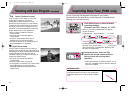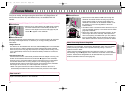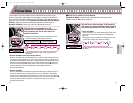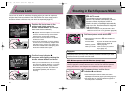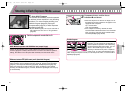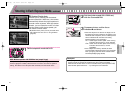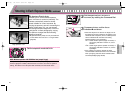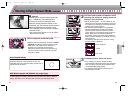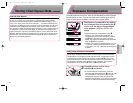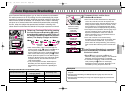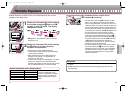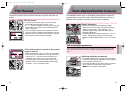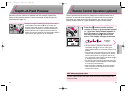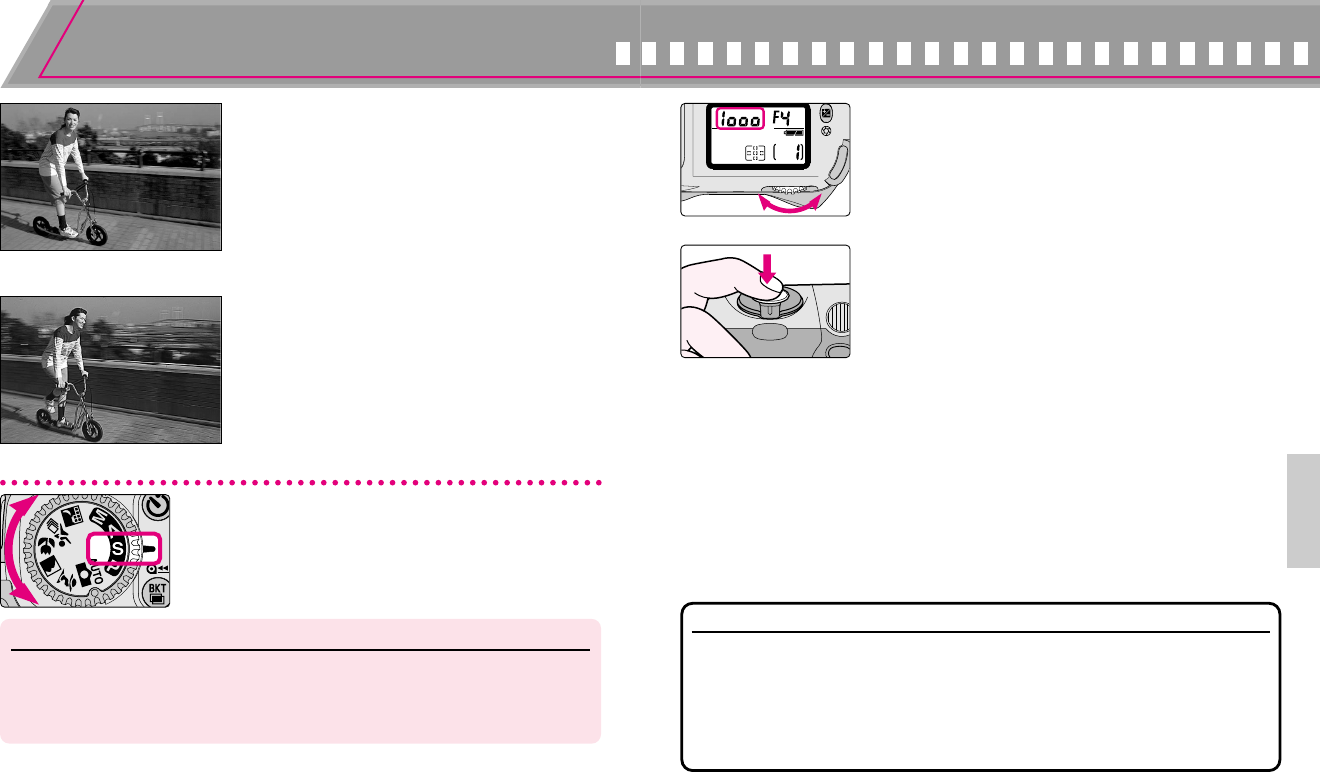
5554
DETAILED OPERATION
Shooting in Each Exposure Mode—continued
S: Shutter-Priority Auto
Enables you to manually set the desired
shutter speed (30-1/2000 sec.); the camera
automatically selects the proper aperture to
provide correct exposure. With high shutter
speeds, you can freeze the motion of a fast-
moving subject; with slower speeds, you
can create a motion effect.
•S (Shutter-Priority Auto) can only be used with a
CPU Nikkor lens such as D- or G-type Nikkor
(page 88).
1
Set the exposure mode dial to S.
NOTE: Minimum aperture with CPU Nikkor lens (except G-type)
Always set the aperture ring of a CPU Nikkor lens (except G-type) to its
minimum (largest f-number). When the lens is not set to its minimum aperture
setting, ƒEE blinks in the LCD panel and viewfinder, and the shutter locks.
3
Compose picture, confirm focus
indicator / and shoot.
•When the subject is too dark or too bright, one of
the following warning indications will appear in the
viewfinder and LCD panel. (Over or underexposure
value is indicated with the electronic analog
exposure display in the viewfinder.)
•HI: Select higher shutter speed. If the warning
indication still remains on, use an ND filter.
•Lo: Select slower shutter speed. If the warning
indication still remains on, use the
Speedlight.
•If the subject is too dark or backlit, the flash
recommended indication fi blinks in the viewfinder
when you lightly press the shutter release button.
Use the Speedlight (page 80/92).
Fast shutter speed 1/500 sec.
Slow shutter speed 1/30 sec.
2
Set the shutter speed (30-1/2000 sec.)
with the Command Dial.
Check point
•If -- (Long Time exposure) is selected in Manual exposure mode and the
exposure mode is changed to Shutter-Priority Auto without cancelling --, --
blinks and the shutter locks. To shoot in Shutter-Priority Auto exposure mode,
select shutter speed other than -- by rotating the Command Dial.
F65 (E) 02.12.27 5:43 PM Page 54



